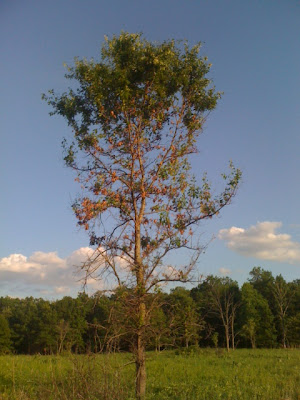My Friend Wendy Paulson learned a painful lesson by loving
birds. Of course, love opens us up to such lessons. And birds, despite their
beauty, lead lives of fear and impending brutality. Most die by violence.
We generally don’t think of that, when we watch them. But
she indeed wrestled with it through the pleasure of finding birds nests. She was
curious. The architecture of many nests is amazing. Eggs of many species are
beautiful.
She’d check back from time to time to see how the downy
families were doing. Her first horror was that most of the nests were soon
ravaged by predators. Broken, slurped-out eggs or the remaining bones and feet
of babies were the repeated gruesome “end of story.”
The second horror was the realization that the predators
(foxes, raccoons, etc.) were probably following her scent and footsteps. That’s
one thing about predators – they’re curious. Belatedly she realized that she
was the cause of the carnage, and she stopped seeking out nests.
At Somme recently I’d been casing the preserve for invasives when a mallard
exploded out of the grass two or three feet in front of me. That always means a
nest. Sure enough, with eleven eggs, seen below.
I resolved to stay away from it. One pass by a person who
was going back and forth across the preserve wouldn’t draw attention, I hoped.
The next day I had the pleasure of doing a “thinking tour”
around the preserve with Sunny and Eliezer, two wise and fun volunteers who had
a lot of questions and ideas. As a treat, I said, let’s take a peek at a
mallard sitting on her nest about a dozen feet from the main trail. “Stay on the trail. Don’t
speak loudly. Don’t make quick movements. We don’t want to flush her.”
But when we got to the spot, we couldn’t see her, even
though the nest area was in plain view. What to do? Could the nest have been vandalized
already? Sitting hens are camouflaged. We looked and looked. Finally I said,
“Okay, if you want, Sunny, just tiptoe over and look to the left of that stump,
and tell us what you see.”
Soon she said with disappointed tone, “Oh, they’ve hatched.”
“Are there broken egg shells,” I asked.
When she said no, I explained that the ducklings couldn’t
have hatched then. When they hatch, the duck leaves the nest and eggshells
behind, and the whole brood of tiny legs starts hiking toward water.
I stood on the trail wondering what to do. If the eggs were
gone, no harm, I suppose, to go over to see and interpret.
When I did, I saw nothing. No eggs, no nest,
right exactly where it had been the day before.
I had a hunch. I picked up a dead stick (so my scent
wouldn’t end up where I touched) and pried up a bit of the plain-looking
ground where the nest had been. Sure enough, there was a surprise inside. Under
a layer of dry leaves and moss was a layer of feathery down. Under the down
were eleven beautiful eggs. The air was warm, mid day. The duck needed
something to eat, and she kept those eggs warm with a down comforter. She kept
them invisible with a layer of typical looking duff. I used my stick to
carefully replace both.
Yet, all three of us had made footstep trails to the nest. I had meant to be more careful.
Yet, all three of us had made footstep trails to the nest. I had meant to be more careful.
We continued our adventure of preserve discoveries. Our loop around the main trail took more than two
hours. We saw and discussed much. At the very end, our trail took us past the nest once again.
“Surely she’s back by now,” I said. “Watch for her head to move a bit.” But once again, no duck on the nest. This
time there was no invisibility. Indeed, we saw carnage and crime scene.
In just two hours, after we three
walked to the nest. The predator had struck.
“Could a coyote have been simply watching you, and pounced
as soon as you left?” one steward asked. But our scent probably told the story
well enough. Should I feel dismal? Somber? Is this destruction just one more assault on nature at the hand of man – in fact me? Or is it just nature, and I should relax?
The mallard is a common bird. I'd feel definitely worse if this were the nest of a woodcock or a black-billed cuckoo. I resolve to be more careful. (I've resolved before.)
The mallard is a common bird. I'd feel definitely worse if this were the nest of a woodcock or a black-billed cuckoo. I resolve to be more careful. (I've resolved before.)





